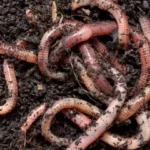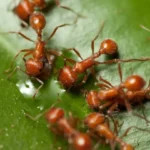If you’re facing a relentless flea problem in your home, you’re likely looking for a solution that is both effective and safe for your family and pets. Conventional chemical treatments may raise concerns about toxicity and environmental impact. This article introduces beneficial nematodes for fleas as a natural, non-toxic alternative to help manage their swelling infestations effectively.
Beneficial nematodes, specifically those of the species Steinernema carpocapsae and Steinernema feltiae, are highly effective in controlling flea populations in outdoor environments. These microscopic, soil-dwelling organisms actively seek out flea larvae and pupae in the soil. This environmentally friendly solution not only helps to manage fleas but also contributes to the health of the soil ecosystem. Apply within six hours of mixing with water for best results.
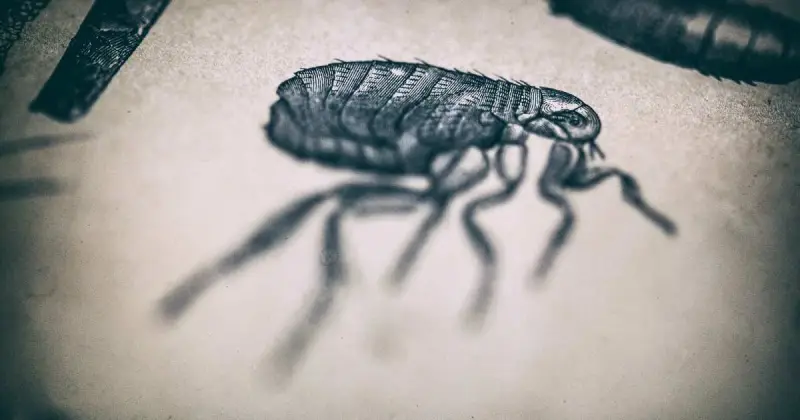
In this article, you’ll discover how to prepare and apply nematodes efficiently to maximize their effectiveness against fleas. You’ll also uncover how to maintain the proper soil moisture to keep the nematodes active and the strategic areas to target for application, which home gardeners typically overlook.
Humble Highlights
- Save time by understanding what nematodes can do for your backyard vegetable garden and how they can specifically fight back against raging flea colonies so you can take back your turf and stop giving ground to insects that would harm your crops!
- Discover these 4 vital steps to properly apply nematodes throughout your green space and how these invisible helpers interact and co-exist with your furry friends so you can time their application in your yard appropriately.
- Discover these key differences between environmentally friendly nematodes and chemical applications for encroaching fleas so you can maximize the effectiveness of their treatment while helping preserve the surrounding ecosystem.
What Are Beneficial Nematodes
Beneficial nematodes are essential predators that specifically target and eliminate pest insects such as flea larvae, contributing to a healthy ecosystem. These microscopic worms provide a natural and effective method for controlling fleas and other soil-dwelling pests, and they’re safe for humans, pets, and plants. Utilizing beneficial nematodes is a viable and eco-friendly option compared to chemical pesticides.
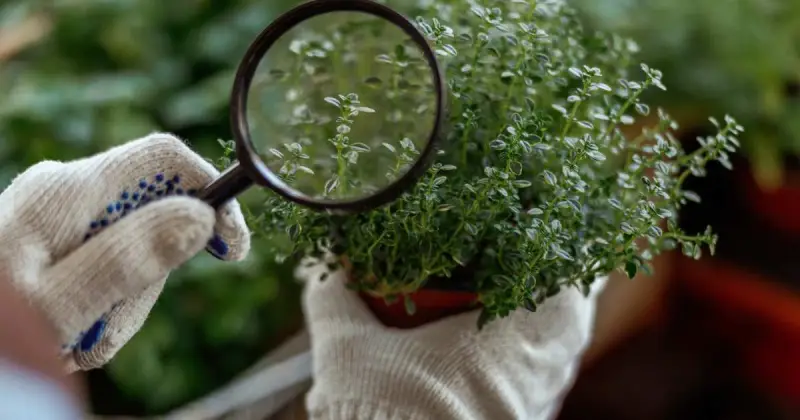
Nematodes should be mixed with water to combat fleas and applied to the impacted areas. They’re most effective in soil temperatures over 55°F, primarily during the spring and fall.
By attacking pests during their vulnerable larval and pupal stages and curbing future outbreaks, beneficial nematodes significantly reduce flea populations and help sustain a pest-free setting. Integrating these nematodes into flea management strategies supports a balanced ecosystem and delivers sustained pest control advantages. 1
Understanding Flea Life Cycle
To target fleas and their larvae with nematodes, it’s crucial to grasp the flea life cycle to manage infestations effectively. Here are several essential points to consider:
- Eggs: Fleas start their cycle as eggs. Depending on environmental factors, these can hatch in 2 days to 2 weeks.
- Larvae: Post-hatch larvae feed on organic matter in their surroundings. They undergo several molts before advancing to the next stage. 2
- Pupa: In this stage, larvae encase themselves in cocoons, entering a dormant state that can last weeks to months, depending on the right developmental conditions.
- Adults: Emerging from the pupa, adult fleas immediately seek a host to obtain a blood meal, perpetuating the cycle. Recognizing these stages aids in devising effective strategies and preventive actions to address flea problems proactively.

Benefits Of Using Nematodes
Using nematodes for natural pest control presents multiple benefits, particularly in achieving effective insect management while preserving environmental health. These nematodes are safe for humans, animals, and the broader environment, as they specifically target insect larvae and release bacteria that fatally infect these pests, usually within 7-10 days.
Nematodes are effective against various life stages of insects, enhancing their utility in pest regulation. They’re applicable in diverse settings such as gardens, greenhouses, and lawns. However, they require adequate soil moisture for mobility and prey detection. Proper moisture management is crucial to leverage their full potential in controlling pests. 3
A lesser-known benefit of using beneficial nematodes is their role in enhancing plant resilience and growth. When nematodes target and reduce populations of root-feeding pests in the garden, they help minimize root damage that can stress plants and hinder their development.
As any backyard gardener knows, healthier roots mean better nutrient and water uptake, leading to stronger, more vigorous plants.
Additionally, the activity of nematodes and their symbiotic bacteria can promote the formation of beneficial mycorrhizal fungi associations with plant roots. These fungi further improve nutrient absorption, particularly phosphorus, and increase plant tolerance to environmental stresses such as drought.
How To Apply Nematodes
To apply nematodes effectively, distribute them evenly in water before applying them to the infested areas and around structures. Follow this step-by-step guide for optimal results:
- Portion Nematodes: Divide the nematodes into smaller groups to ensure even application and coverage.
- Mix with Water: Stir the portioned nematodes into water using a watering can or sprayer, which activates the nematodes and prepares them for flea control.
- Disperse Nematodes: Spread the nematode solution over areas and structures affected by fleas. Thorough coverage is crucial. 4
- Maximize Effectiveness: For best results, use the nematodes within six hours of mixing. Immediately after dispersing, water the treated zones to facilitate the nematodes’ penetration and initiation of flea control.
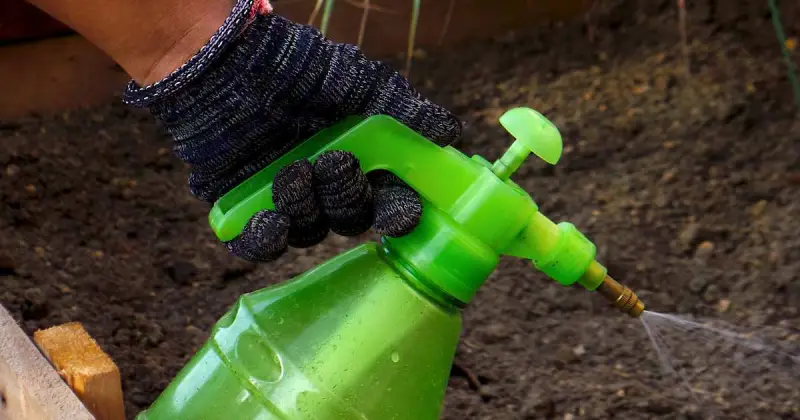
Nematode Compatibility With Pets
Beneficial nematodes specifically target insect larvae and are harmless to pets. They offer a non-toxic method for controlling fleas outdoors and don’t pose any threat to animals.
Pet owners can use nematodes as an alternative to chemical pesticides to maintain a safe environment in their yards or gardens. This approach effectively reduces flea populations and supports eco-friendly practices, enhancing the health of both pets and humans. 5
Nematodes enable homeowners to address flea issues without the risk of harmful chemicals, ensuring an efficient and secure method for managing pests in outdoor areas.

Nematode Application Timing
When applying beneficial nematodes, it’s crucial to time their deployment to optimize their effectiveness in controlling outdoor fleas since proper timing is crucial for the success of beneficial nematodes in both indoor and outdoor settings. Here are essential guidelines for achieving the best results:
- Administer the nematode mix indoors at any time or outdoors during the morning, evening, or overcast days to protect it from direct sunlight. Direct sunlight can damage the nematodes due to their sensitivity to UV light.
- Keep the soil temperature within the range of 44-86°F for optimal performance. Beneficial nematodes are most effective in this temperature bracket, ideally above 55°F for managing fleas.
- Immediately water the area after applying the nematodes and maintain soil moisture for the following two weeks to promote the nematodes’ activity and survival. 6
- Observe the reduction in the adult flea population within 1-2 weeks following the application, which signals that the nematodes effectively manage the flea problem.
By incorporating beneficial nematodes into your pest management strategy, you can control harmful insects and support your plants’ overall health and productivity. This biological control method is particularly advantageous because it targets fleas at the immature stages, preventing them from developing into adults that can infest pets and homes. Check out the video below that explains how to apply these friendly helpers!
Environmental Impact Of Nematodes
Nematodes are crucial in sustainable pest management. They target specific insects such as flea larvae and provide an effective non-chemical alternative. These microscopic worms don’t harm beneficial organisms, thereby preserving the health of ecosystems. They focus on pests like flea larvae to control insect populations, and so long as they are applied appropriately, they generally won’t harm other beneficial species or the environment.
Using nematodes to control fleas is a safe approach that supports a balanced ecosystem. Nematodes can manage pests at various life stages, ensuring comprehensive pest control that doesn’t disrupt ecological equilibrium. This method fosters the well-being of beneficial insects and plants, achieving pest control in an environmentally responsible manner. 7
A less common impact nematodes play within the environment is their contribution to suppressing soil-borne plant pathogens. Some beneficial nematodes, particularly those in the genera Steinernema and Heterorhabditis, not only target insect pests but also indirectly reduce populations of harmful fungi and bacteria that cause plant diseases.
The symbiotic bacteria released by these nematodes can produce antimicrobial compounds that inhibit the growth of pathogenic microorganisms in the soil.
This natural biocontrol effect helps to create a healthier soil microbiome, which can enhance plant resistance to diseases and reduce the incidence of root rot, wilt, and other soil-borne infections. Thus, it promotes sustainable agricultural practices and reduces the reliance on chemical fungicides.
Nematodes vs. Chemical Flea Control
In comparing beneficial nematodes to chemical flea control methods, several advantages of nematodes become apparent, including:
- Environmental Impact: Nematodes are a non-chemical approach to flea control, ensuring little to no environmental harm.
- Pet Safety: Nematodes pose very little risk to pets, making them an ideal option for homes with animals. 8
- Lifecycle Interruption: These organisms specifically target flea larvae in the soil, effectively breaking the infestation cycle and hindering future populations’ growth.
- Population Control: The application of nematodes can lead to a noticeable decrease in adult flea numbers within 1-2 weeks, offering a sustainable solution to flea infestations.

Tips For Maximizing Nematode Effectiveness
To enhance the effectiveness of beneficial nematodes in controlling fleas, ensure soil temperatures are maintained above 55°F. Optimal times for application are during spring or fall, which aligns with flea lifecycle peaks. Typically, you can observe a significant reduction in adult flea populations within one to two weeks following application.
Each nematode package is accompanied by diatomaceous earth, water, and potassium sorbate, which collectively improve their impact on fleas at various stages of development. Adhering to these guidelines will significantly boost your success in managing flea populations. 9
The key to this process is the appropriate timing and maintaining suitable soil temperatures. Depend on nematodes to efficiently target and diminish flea threats, protecting your pets from these irritating insects.

Conclusion
Beneficial nematodes provide a safe and natural method for flea control in your home and garden. By targeting the flea life cycle and applying nematodes correctly, you can significantly decrease flea populations, ensuring a healthier environment for you and your pets without relying on harsh chemicals.
Opting for nematodes helps protect the ecosystem and keeps your living spaces safer. Embrace this eco-friendly solution and enjoy the comfort of a pest-free home.
Have you successfully applied beneficial nematodes to your green space? We’d love to hear about your results. Drop us a line in the comment section below and tell us how these hard-working critters helped you!
SOURCES
- Wikipedia – Nematode
- Longdom Publishing, Entomology, Ornithology & Herpetology: Current Research – The Life Cycle Of Fleas And How To Avoid Them
- National Library Of Medicine, National Center For Biotechnology Information – Entomopathogenic Nematodes For Control Of Insect Pests Above And Below Ground With Comments On Commercial Production
- ScienceDirect – Nematode-Based Indices In Soil Ecology: Application, Utility, And Future Directions
- ScienceDirect – Nematodes
- Penn State University, Extension – Insect-Parasitic Nematodes For The Management Of Soil-Dwelling Insects
- North Carolina State University, Extension Onslow County Center – Nematodes In The Home Garden
- Northwest Center For Alternatives To Pesticides – Managing Fleas Without Pesticides
- Michigan State University, Plant & Pest Diagnostics – Nematodes In Home Gardens And Landscapes


